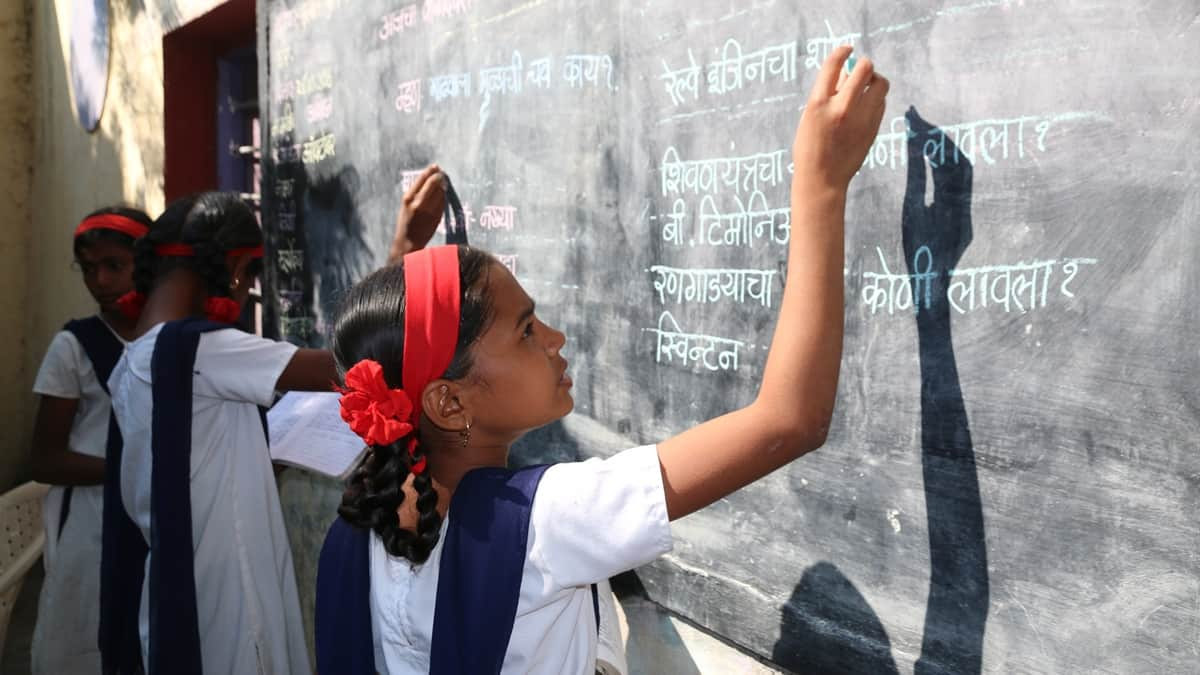Maharashtra language policy questionnaire draws criticism over ‘Hindi bias’
Vagisha Kaushik | October 10, 2025 | 08:35 AM IST | 3 mins read
Former education official questions why no other Indian language has been mentioned in the questionnaire on three-language policy.

As the Maharashtra government’s committee gathers views on implementing the three-language policy in English, Hindi, Marathi medium schools, a former education official has raised concerns over the structure and intent of the questionnaire.
In a statement, Bhau Gawande has pointed out that the survey shared by Narendra Jadav committee repeatedly emphasises Hindi as the only third language, leaving out other Indian languages permitted under the National Education Policy (NEP) 2020 guidelines. While multiple questions talk about the introduction of Hindi, no options are provided for regional or other national languages, he complained.
The official noted that although English has been made compulsory in Marathi-medium schools from Class 1, the question fails to account for the difference in its objectives in each class. He observed that the inclusion of questions about programming languages like Python is not at all related to the purpose of language policy implementation.
Gawande argues that the questionnaire’s phrasing such as referring to “Marathi, English, and Hindi” as the basis of national integration implies a preference for Hindi or an assumption that the language is central to unity, contrary to the spirit of linguistic diversity promoted by the NEP.
While the education department’s survey supposedly aims to gather public opinion from students, parents, teachers, officials, and social workers, educationist stresses that the policy’s success depends on ensuring linguistic inclusivity rather than privileging one language over others.
'Problem' with Maharashtra three-language policy questions
Gawande addressed each question separately and made the following observations:
Original Questions (from the Questionnaire) | Bhau Gawande’s criticism |
Current Situation: At present, the three-language policy in Marathi-medium schools is as follows: Classes 1–4: Marathi and English compulsory Classes 5–7: Marathi, English, and Hindi compulsory Classes 8–10: Marathi and English with one of the following options — Hindi / Sanskrit / Pali / Ardhamagadhi (entire) or Hindi + Sanskrit / Pali / Ardhamagadhi / Urdu / Persian / Arabic (50:50) | The explanation of the current situation is incomplete. Although English is compulsory from Class 1, its class-wise objectives and its status as a first language are not uniform or clearly stated. |
Q1. From which class should the three-language formula (Marathi, English, Hindi) be implemented in Marathi-medium schools? | The question includes only Hindi as the third language. Why have other Indian languages not been included as options? |
Q2. For pre-primary to Class 2, which languages should be used for songs, games, conversation, and basic letter recognition? (Options given: Marathi, English, Hindi) | The question includes no Indian language other than Hindi. There should have been scope for regional or neighbouring Indian languages as well. |
Q3. From which class should English language teaching (reading and writing) begin? | No major objection, but the learning objectives for English should have been clearly differentiated for each level. |
Q4. From which class should Hindi language teaching (reading and writing) begin in Marathi-medium schools? | Again, only Hindi is mentioned. As per government decisions, schools can select any Indian language as the third language — yet the questionnaire focuses exclusively on Hindi. |
Q5. For Classes 8–10, along with Marathi and English, which options should be offered? (Multiple options allowed: Entire Hindi / Sanskrit / Pali / Ardhamagadhi / Hindi + Sanskrit / Pali / Ardhamagadhi / Urdu / Persian / Arabic 50:50) | Even here, no mention of other Indian languages. The question is Hindi-centric and contradicts the NEP 2020’s multilingual vision. |
Q6. In the future, from which class should English conversation and presentation skills be introduced? | Technically acceptable, but the question should be linked to overall language development, not only English fluency. |
Q7. In the future, from which class should Information Technology or Computer Science (including programming languages like Python) be taught? | This question is irrelevant to the committee’s scope. Programming languages are not part of linguistic education; this is a technical subject, not a spoken or written language. |
Q8. For national integration, apart from Marathi, English, and Hindi, should students learn any Indian or foreign language (with extra marks) through an automated, self-certified computer app? | The phrasing — “apart from Marathi, English, and Hindi” — implies that Hindi is given a special status in the name of national integration. The framing shows a built-in bias. |
Q9. Any other important suggestions or points? | Overall, the questionnaire shows a consistent bias toward Hindi, undermining the principle of linguistic inclusivity that the three-language policy is meant to promote. |
Follow us for the latest education news on colleges and universities, admission, courses, exams, research, education policies, study abroad and more..
To get in touch, write to us at news@careers360.com.